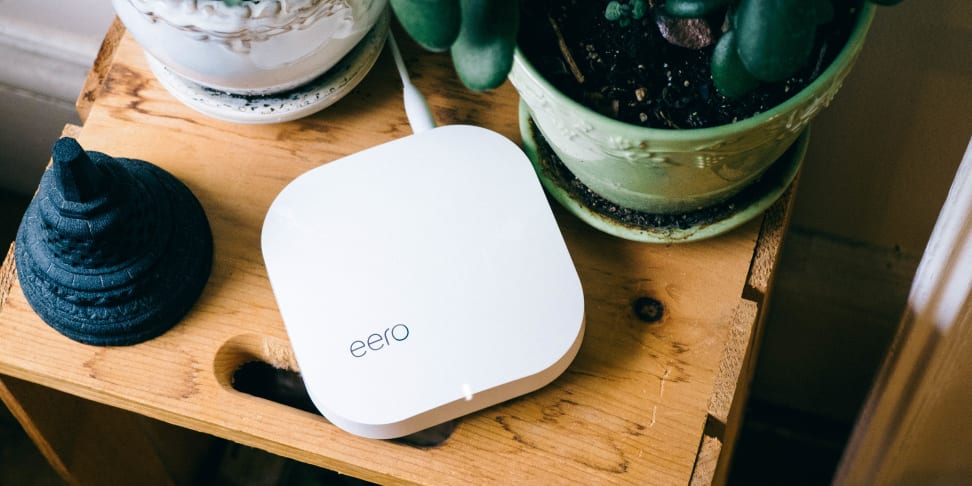Getting slow Wi-Fi speeds? Here's how to fix it
Does your Netflix keep buffering? You don't have to live like that.
 Credit:
Reviewed.com / Brendan Nystedt
Credit:
Reviewed.com / Brendan Nystedt
Products are chosen independently by our editors. Purchases made through our links may earn us a commission.
Samsung announced this week the launch of SmartThings Wi-Fi, which marries the AI-powered Plume mesh Wi-Fi system with a SmartThings hub.
Mesh Wi-Fi seamlessly spreads your signal throughout your home to ideally eliminate weak internet signal and dead spots. Mesh systems are great for covering lots of area, but if you’re suffering from slow internet speeds, there are a few other fixes you can try before you invest in this, or any, mesh system.
Before we go any further, head over to Fast.com and check your speed. Walk to different parts of your house with your laptop and run the speed check in each location. That will help you to figure out whether your slow connection is due to a weak signal or some structural obstacle (an old drainage stack, a chimney, etc.)
If your results are close to what your ISP says you should be getting, your speed troubles might have more to do with a sluggish computer, a browser running too many extensions, or even the fault of a poorly-designed website.
If your internet is truly slow, one of these solutions should work:
1. Try moving it
If your router is hiding in some out-of-view corner of the house, you might rethink your placement. The further the signal has to travel, the weaker it will be, so try to have your router centrally located and in the open rather than nestled behind other equipment or furniture.
If you can’t stand having a big black box amongst your other decor, you can camouflage your router and no one will be the wiser.
2. Secure your signal
Hopefully your Wi-Fi is password protected with a hard-to-guess password. If it’s not, you could very well have neighbors connecting from their houses and hogging your bandwidth.
Hey, we all have at some point looked for open networks out of desperation when we were having internet troubles. Don’t get mad — get a password.
3. Upcycle a soda can
We tried this and didn’t see much difference in signal strength, but there are those who swear it works, so it might be worth a try.
A washed-out aluminum can can be cut open and placed behind your router’s antenna. The aluminum should bounce your Wi-Fi signal a little further. Here’s how to use an aluminum can to boost Wi-Fi signal strength, if you want to give it a shot.
4. Buy a new router
If none of these signal-boosting tweaks make a difference in your home, it might just be that you need a router that can put out a stronger signal.
In our tests, the D-Link DIR-878 (available at Amazon for $119.99) offered blazing speed and great range. It’s the best router for most people, but if you need more range than standard routers can provide, here are the best mesh routers right now. Read more: The Best Wi-Fi Routers of 2018
5. Try a Wi-Fi extender
If you need to give your Wi-Fi signal a little more distance, a Wi-Fi extender might be an affordable way to solve your problem. Wi-Fi extenders are also called repeaters, and that’s because they receive the signal from your router and repeat that signal out much further than the router alone can manage.
Unfortunately, you have to change which one you’re connected to as you move from one signal’s range to the other, and you’ll lose a lot of speed when you move from the router to the extender. It’s not a perfect fix, but it might get you by.
6. Upgrade to a mesh system
Where a router broadcasts your signal from one box through your home, a mesh network broadcasts from multiple different boxes that you spread around. They all look like the same network to your device, and they intelligently move you from one to another to get the best signal without having to do anything on your end.
This isn't the cheapest solution, but it's just about guaranteed to fix your poor Wi-Fi signal woes if all else fails. Read more: The Best Mesh Wi-Fi Routers of 2018


